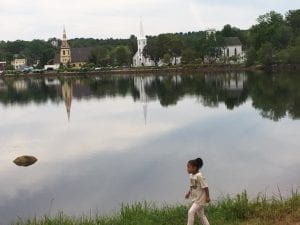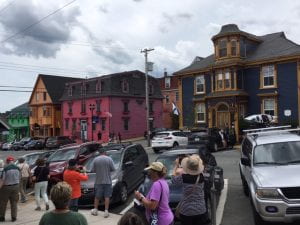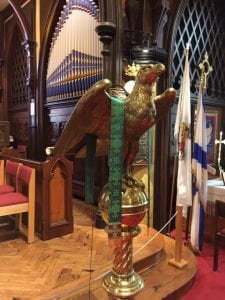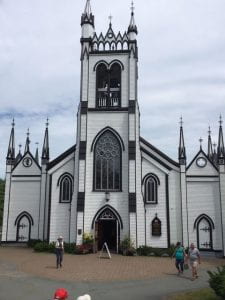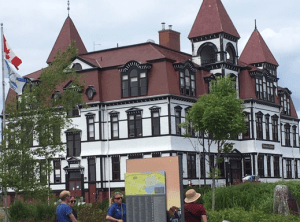Afternoon of Day 10 brought us to Lunenburg, probably the most scenic town on our Roads Scholar tour. Below is a small sample of what we saw on our guided tour.
Lunenburg is Fodor’s No. 1 of “Top Experiences” in the Maritimes, probably for its coastal beauty and visible history. Founded by German immigrants, it actually got its name from the British King George II, who was titled Duke of Braunsweig-Lunenburg. The British recruited settlers from the German, Swiss and French in 1753 to establish Lunenberg, first as a fortress near Halifax.
Below a view of the four prominent churches of the skyline, including Zion Lutheran, St. John’s Anglican, Central United Church, and St. Andrews Presbyterian (barely visible). The whimsically painted houses on King Street are known as the UNESCO Fresco, since they broke the black and white architectural tradition. In 1995 the United Nations designated Lunenburg a World Heritage site for its unique preservation of the British Colonial layout and authenticity as a working town. There are only three such sites in North America.
Savored one of our best lunches: Lobster and Macaroni, at Grand Banker Bar & Grill, right on the harbor. Montague Street is the place for eating and shopping.
Below, outside and inside views of St. John’s Anglican Church, the second-oldest Protestant Church in Canada, celebrated for its Carpenter Gothic architectural style. It suffered extensive damage from a fire in 2001, but was completely restored with community donations.
The Academy served as a public school for 117 years. Today it is home to two international schools: Class Afloat and Lunenburg Academy of Music Performance. Another fire reclamation project. Situated strategically at the top of a hill overlooking the town.

